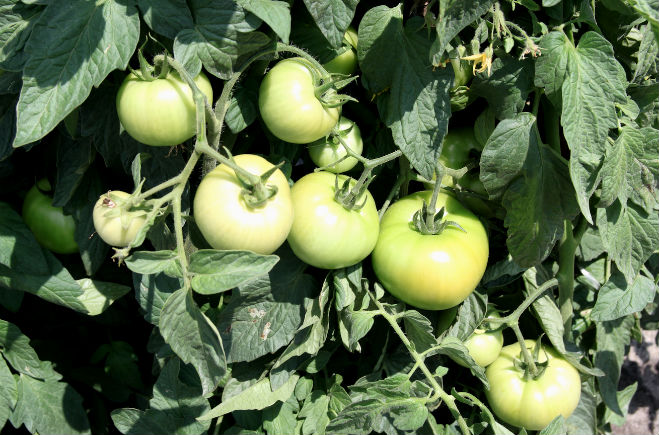Feb 5, 2018Late blight spotted in southwest Florida tomatoes, potatoes
More late blight has been found around southwest Florida and is now present on both tomato and potato.
Gene McAvoy, county Extension director, University of Florida, reporte, weather the night of Feb. 4 and forecast for the next several days will be conducive for disease development with potential for foggy mornings, abundant dew and possibility of showers.
“Growers would be well advised to scout susceptible crops carefully and evaluate their fungicide programs.
Late blight is caused by the fungus-like ‘oomycete’ Phytophthora infestans, which is a pathogen of potato and tomato. This disease can spread quickly and devastate a tomato or potato field within a few weeks if not properly controlled.
The disease thrives under cool and wet conditions. Temperatures between 50 and 80 F combined with moist conditions such as rain, fog, heavy dews, or relative humidity above 90 percent are conducive for disease development. Night temperatures in the mid-fifties with daytime temperatures from the mid-fifties to mid-seventies are ideal for this disease.
Since the disease can spread so rapidly, growers should scout their fields thoroughly each day, especially when cool and wet conditions conducive to disease development prevails.
Late blight symptoms on leaves appear as irregularly shaped brown to purplish lesions with indefinite border lesions that can span veins. The lesions may be seen any time of day, on any stage of plant growth and on leaves of any age. Velvety, white fungal growth may appear on the lower surface of affected leaflets early in the morning before leaves dry and/or in the lower canopy.
On stems, purplish lesions may be found any where on the stem. Cottony, white growth of fungus on stems with lesions can often be seen early in the morning and/or in the lower canopy. Stems with lesions are brittle and break easily. Lesions are confined to epidermis and cortex. Leaf rolling and wilting is often associated with stem lesions and purpling of leaflets may occur in some varieties.
Begin a spray program with fungicides if late blight is in your area or weather conditions are suitable for late blight development. After harvest, kill infected foliage to minimize tuber infection.
Tomato growers should purchase disease-free transplants. Observe your fields thoroughly each day, especially when cool and wet weather prevails.
Currently, fungicides are the most effective means of controlling late blight and will remain the primary tool until cultivars with resistance to this disease become available. Fungicides slow the rate at which the disease develops in the field by creating a protective barrier on the foliage.
Just applying a chemical, however, does not necessarily equate with effective disease control. Relative effectiveness of a product, coverage, and timing must be factored into the equation for maximum benefit.
Numerous fungicide products are registered for late blight control. Protectants, as the name implies, protect foliage from infection by spores. Protectant chemicals must be well distributed over the leaf surface and must be applied before spores land on leaves. They are ineffective against established infections.
Protective applications of chlorothalonil are your first line of defense formanaging late blight. Timing is critical – applications must be made when conditions are conducive for disease development and before infection occurs!!!
Systemic products become distributed locally within plant tissues and protect foliage from infection by spores. They may kill some established infections and may suppress production of new spores. Even a short break in spray schedules, despite what is said regarding some of the newer fungicides, can result in a dramatic increase in blight under the proper conditions.
Consult current UF/IFAS recommendations for all labeled fungicides for the control of late blight in Florida. Go to for the most recent update: http://edis.ifas.ufl.edu/pdffiles/cv/cv13700.pdf.
In Florida, it has been observed that seldom does a widespread late blight epidemic occur on tomatoes in the Manatee-Ruskin area unless the disease was present in the Immokalee area and/or Dade County. Since late blight has been confirmed on tomato in Immokalee growers in other areas are advised to adhere to a preventative spray program.”
See USABlight for more info and photos – http://usablight.org/lateblight















